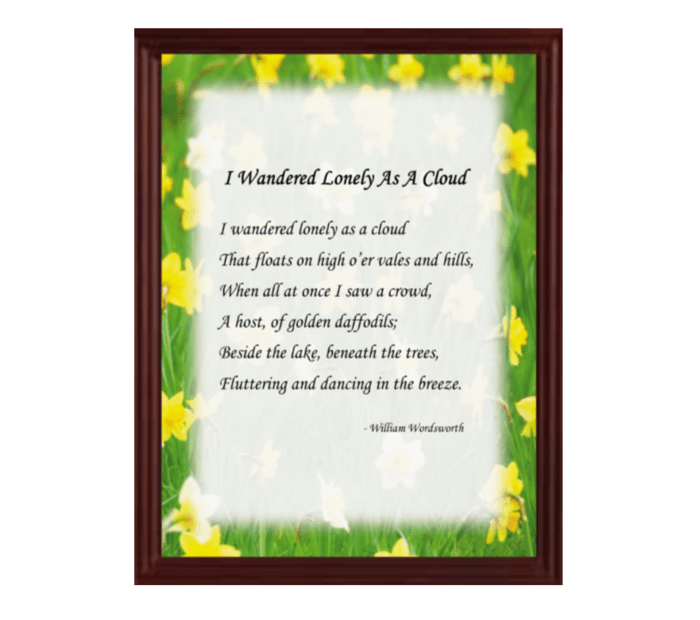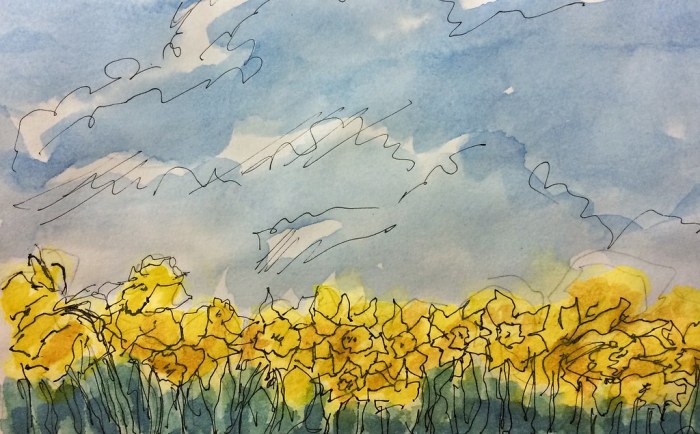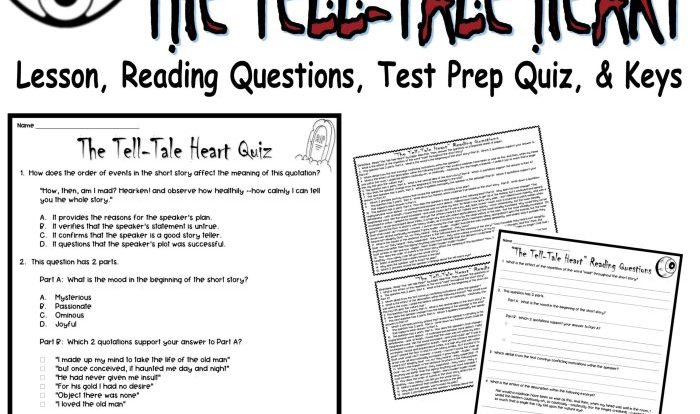Poetic devices in i wandered lonely as a cloud – Poetic devices in “I Wandered Lonely as a Cloud” unveil the intricate tapestry of imagery, sound, and structure that define William Wordsworth’s iconic poem. This exploration delves into the literary arsenal employed to craft a vivid and resonant narrative, revealing the profound impact of poetic devices on the poem’s meaning, tone, and enduring legacy.
The poem’s rich tapestry of literary devices weaves together figurative language, sound devices, and structural elements, each contributing to the poem’s overall effect. Figurative language, with its evocative imagery and symbolism, paints vivid mental pictures and conveys deeper meanings. Sound devices, through their musicality and rhythm, create an emotional resonance that enhances the poem’s impact.
Poetic Devices in “I Wandered Lonely as a Cloud”

William Wordsworth’s poem “I Wandered Lonely as a Cloud” is a classic example of Romantic poetry, known for its vivid imagery, emotional intensity, and use of poetic devices.
Literary Devices
The poem employs a variety of literary devices to create its unique effect:
- Simile:“I wandered lonely as a cloud / That floats on high o’er vales and hills.” This simile compares the speaker’s solitary state to the solitary nature of a cloud.
- Personification:“The waves beside them danced.” The poet gives human qualities to the waves, making them appear to dance with joy.
- Metaphor:“A host, of golden daffodils.” The daffodils are compared to a host, emphasizing their abundance and their similarity to a crowd of people.
Figurative Language
The poem also makes use of figurative language to enhance its imagery and symbolism:
- Imagery:“Ten thousand saw I at a glance, / Tossing their heads in sprightly dance.” This imagery creates a vivid picture of the daffodils in bloom, swaying in the wind.
- Symbolism:The daffodils can be seen as a symbol of joy, beauty, and hope. Their resilience in the face of adversity reflects the speaker’s own ability to find solace in nature.
- Alliteration:“I wandered lonely as a cloud” and “Beside the lake, beneath the trees.” The repetition of consonant sounds creates a sense of rhythm and musicality in the poem.
Sound Devices
Wordsworth also uses sound devices to create a sense of musicality and rhythm:
- Assonance:“I wandered lonely as a cloud” and “The waves beside them danced.” The repetition of vowel sounds creates a sense of flow and harmony.
- Consonance:“Beneath the trees, beside the lake” and “Ten thousand saw I at a glance.” The repetition of consonant sounds creates a sense of rhythm and emphasis.
Structure and Form
The poem is written in iambic tetrameter, with a rhyme scheme of ABAB CDCD EFEF GG.
The regular meter and rhyme scheme create a sense of order and stability, which contrasts with the speaker’s initial sense of loneliness and isolation.
Imagery and Symbolism
The poem’s vivid imagery and symbolism contribute to its emotional and thematic impact:
- Imagery:The daffodils are described as “golden” and “dancing,” which creates a sense of joy and celebration.
- Symbolism:The daffodils can be seen as a symbol of hope and renewal, as they bloom in the spring after a long winter.
Themes and Ideas, Poetic devices in i wandered lonely as a cloud
The poem explores several central themes:
- The power of nature:Nature has the ability to soothe and inspire, as evidenced by the speaker’s experience with the daffodils.
- The importance of memory:The speaker’s memory of the daffodils brings him comfort and joy, even when he is away from them.
- The human connection to nature:The speaker’s experience with the daffodils reminds him of his own connection to the natural world.
FAQ Explained: Poetic Devices In I Wandered Lonely As A Cloud
What is the significance of the daffodils in the poem?
The daffodils symbolize joy, hope, and the transformative power of nature.
How does the use of alliteration contribute to the poem’s musicality?
Alliteration creates a pleasing sound pattern that enhances the poem’s rhythm and flow.
What is the purpose of the simile “continuous as the stars that shine”?
The simile emphasizes the vastness and abundance of the daffodils, comparing them to the countless stars in the night sky.


